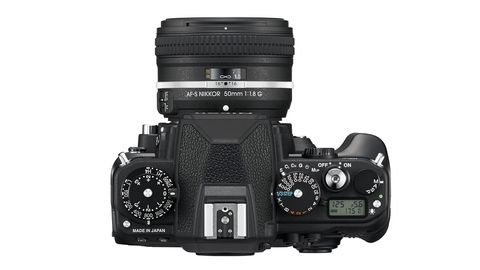Why you can trust TechRadar
Jeremy Walker is a widely respected professional photographer who specialises in photographing landscapes, architecture, people and industry. He was commissioned by Nikon to use the Df to shoot images for the camera's brochure, and spent four weeks using the camera. What follows are his impressions and thought about Nikon's latest SLR.
Earlier this summer I was lucky enough to be offered the new Nikon Df camera to use.
My first impressions of the camera are of how much smaller and lighter it is compared to the other cameras in my bag, the D3X and D800. And while initially the ergonomics took a little getting used to (gone the smooth curves of other modern Nikon SLRs) I soon found using the controls became second nature. It's also eye-catching and stylish, with a 1980s retro look, think F3 or FM2. I think the chrome version looks better than the black.
On receiving the pre-production model my first action was to bolt on one of Nikon's f/2.8 zoom lenses, the 24-70mm. The camera felt front-heavy and awkward to hold, and I was immediately disappointed. However when using smaller and lighter prime lenses this camera feels (and looks) just the ticket.
This is a camera designed for primes, for hand holding, for street and travel photographers, for those for whom weight is an issue, for those who want to be discreet and travel light. This is not an all-singing all-dancing camera with every gizmo going, and some will moan about the lack of video capability or not having super-fast frame rates. But I think this camera is about slowing up and thinking about the image and what you are doing. Lets face it, we all have cameras that with many more modes and functions than we use.
So it looks good, and after initial reservations feels great, but what about using it in the real world?
In use everything is where it should be and the dials and knobs become second nature. The 1/3 setting on the shutter speed dial is a nice touch, which allows you to scroll through the shutter speeds in a conventionally digital way rather than use the dial on the top of the camera - although I used the shutter speed dial most of the time.
The 1/3 setting also allows you to go down to an exposure of 30 seconds, something not immediately obvious from the shutter speed dial.
The Information screen layout in the viewfinder is simple and clear, as is Nikon's menu system.
The battery is small (as is the charger), which is good and I am told that they are as good if not better than the D800's battery.
Image quality
So, the important bit, image quality. The sensor is from the Nikon D4, an awesome camera. The Df as you would expect excels in low light, high-ISO situations, produces clear and crisp images up to ISO 1600 and is capable of much more. Hence, the Df is an absolute gem for travel and street photography.
But the Df is not designed just for the realm of low light photography. I have been shooting landscapes with it, hiking up mountains for hours at a time grateful for the lighter load, and shooting crisp, clean images. Certainly for my stitched panoramas the Df is great camera. And this may be seen as heresy, but I also think this is a great camera for a pro to carry as a back-up. It's small and lightweight, and doesn't take up too much room in the camera bag, it's like the FM2 to was to the F3.
I had the Df for about four weeks, and certainly put it through its paces. I enjoyed using it, and was very impressed with the quality of the images.
This is not a review, but my initial thoughts. Would I buy one with my own money?
Too right I would.

